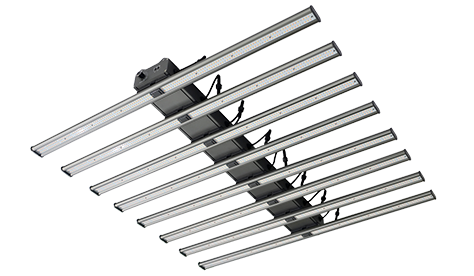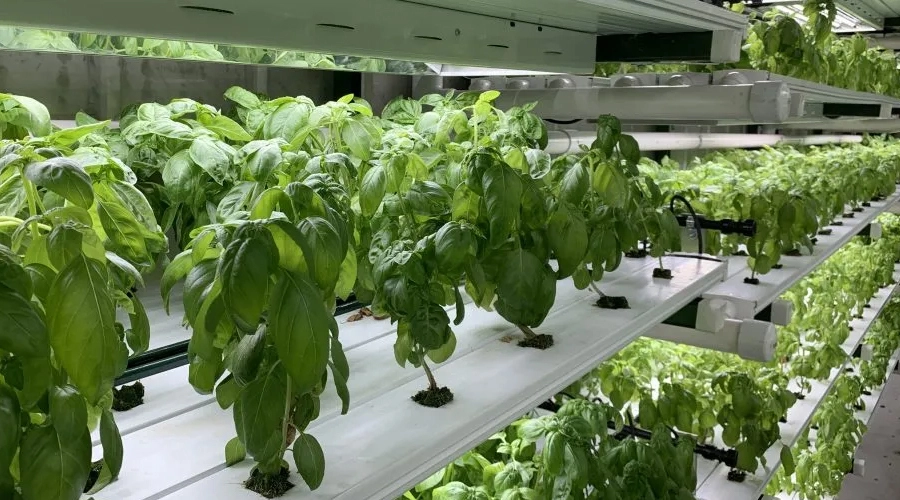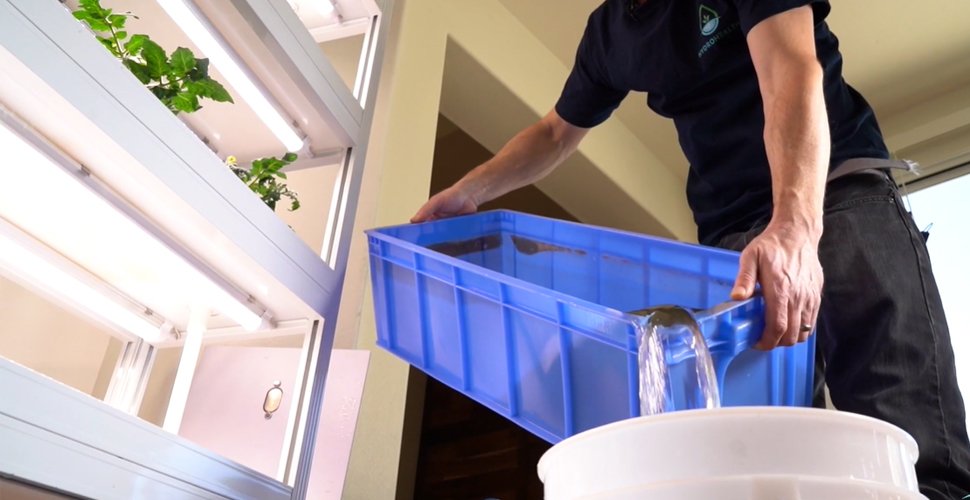Imagine un mundo donde imponentes jardines perforan el horizonte urbano, no rascacielos, con sus capas verdes vibrando con la silenciosa promesa de alimentos abundantes y frescos. Esta es la visión de la agricultura vertical, un enfoque revolucionario que está ganando terreno rápidamente en respuesta a los crecientes problemas de nuestro sistema alimentario actual.
Agricultura tradicional, que alguna vez fue un pilar de la civilización humana, ahora enfrenta desafíos sin precedentes.
- Una tormenta perfecta de escasez de tierra, cambio climático y agotamiento de recursos amenaza nuestra capacidad de alimentar a una población en crecimiento.
- Las sequías agotan las llanuras fértiles, el clima extremo perturba las cosechas y las ciudades en expansión invaden preciadas tierras de cultivo.
El futuro de la alimentación exige soluciones innovadoras y agricultura vertical ha surgido como un rayo de esperanza.
¿Qué problema resuelve la agricultura vertical? ¿Cómo resiste la agricultura vertical al cambio climático? ¿Cómo afectarían culturalmente las granjas verticales a la sociedad? ¿Puede la agricultura vertical ser útil en escenarios locales? ¿Puede la agricultura vertical resolver el hambre en el mundo?
Continúe leyendo para conocer en profundidad el mundo de la agricultura vertical, revelando sus promesas y peligros potenciales, sus impactos sociales y ambientales y su contribución a la construcción de un futuro alimentario más sostenible.
Los crecientes desafíos de la agricultura tradicional
Escasez de tierra: Reducción de la tierra cultivable debido al crecimiento demográfico y la urbanización.
Escasez de agua: Creciente estrés hídrico y uso insostenible del agua en la agricultura.
Cambio climático: Fenómenos climáticos extremos que alteran la producción de alimentos y el rendimiento de los cultivos.
Uso de pesticidas y contaminación.: Preocupaciones ambientales y de salud relacionadas con el uso de pesticidas.
Desperdicio de alimentos: Pérdidas importantes en diversas etapas de la cadena alimentaria.
La agricultura vertical responde al cambio climático: una fortaleza para la seguridad alimentaria
Mientras que la agricultura tradicional está expuesta a las duras realidades del cambio climático, las granjas verticales se mantienen desafiantes y sus entornos controlados proporcionan un refugio para los cultivos.
- El calor abrasador ondea los campos marchitos bajo el sol implacable. Dentro de una granja vertical, la temperatura se mantiene perfectamente optimizada y no se ve afectada por los extremos externos.
- Las lluvias torrenciales ahogan las cosechas. En una granja vertical, los sistemas de riego calibrados con precisión suministran el agua necesaria, lo que elimina los riesgos de inundaciones y minimiza el desperdicio.
Esta capacidad de crear condiciones de crecimiento ideales hace que las granjas verticales sean increíblemente resistentes. El Dr. John Mason, un investigador líder en tecnología de agricultura vertical, afirma: “Al desvincular la producción de alimentos de los caprichos del clima, podemos garantizar rendimientos consistentes y reducir el impacto de la variabilidad climática en nuestro suministro de alimentos.” Este desacoplamiento se manifiesta de varias maneras:
Fortaleza con clima controlado: una región afectada por la sequía donde los cultivos tradicionales se marchitan bajo el sol implacable. Dentro de una granja vertical, una niebla fría mantiene las plantas hidratadas y prósperas. De manera similar, las olas de frío extremo no pueden competir con el calor regulado de estos santuarios interiores.
Paraíso libre de pesticidas: El cambio climático a menudo requiere un mayor uso de pesticidas para combatir los brotes de plagas provocados por patrones climáticos impredecibles. Sin embargo, las granjas verticales, con sus entornos controlados, minimizan la necesidad de pesticidas.
Guerreros sabios del agua: La agricultura tradicional a menudo lucha contra la escasez de agua, con cultivos sucumbiendo a las sequías o sucumbiendo a los campos anegados. Las granjas verticales, con sus sistemas hidropónicos de circuito cerrado, utilizan hasta un 95% menos de agua que los métodos tradicionales.
El impacto de esta resiliencia ya se está sintiendo. En Singapur, una granja vertical prospera a pesar del calor y la humedad tropicales y produce verduras frescas durante todo el año. En Dubai, otra granja florece en el desierto, desafiando las temperaturas abrasadoras y la escasez de agua que azotan la región.
Como Dra. Alicia Martín, economista agrícola, subraya: “La agricultura vertical representa un cambio de paradigma en nuestro enfoque de la producción de alimentos. Al mitigar los riesgos que plantea el cambio climático, ofrece un camino hacia un futuro más seguro y sostenible para la alimentación.”
Al aprovechar el poder de la tecnología y los entornos controlados, la agricultura vertical no es solo un cultivo, sino una creciente esperanza de un futuro en el que la seguridad alimentaria se mantenga firme, incluso frente a un clima cambiante.
Más allá de la comida: impacto social y cultural de la agricultura vertical
Si bien los beneficios ambientales de la agricultura vertical son innegables, su impacto se extiende mucho más allá del ámbito de la eficiencia de los recursos. Estos imponentes jardines en el corazón de nuestras ciudades tienen el potencial de transformar nuestra sociedad y cultura de manera profunda.
Un paisaje urbano bullicioso donde los edificios vacíos se reutilizan para convertirlos en granjas verticales, no solo para producir productos frescos sino también para crear empleos y oportunidades educativas.
Los residentes pueden aprender sobre agricultura sostenible, participar en talleres e incluso ser voluntarios en estas granjas urbanas, fomentando un sentido de comunidad y compromiso.
Esto no es sólo una visión, ya está sucediendo en lugares como Chicago, donde una granja vertical brinda capacitación laboral y productos frescos a comunidades desatendidas.
La agricultura vertical fomenta la soberanía alimentaria y devuelve el poder de la producción de alimentos a las comunidades locales.’ manos. Esto empodera a las personas y fortalece las economías locales, creando cadenas de suministro más cortas y reduciendo la dependencia de la agricultura industrial distante.
Las verduras cultivadas localmente están disponibles en las zonas urbanas, lo que reduce los costos de transporte y apoya a los agricultores y empresarios locales.
Green Thumbs, Green Planet: Vertical Farming's Climate Footprint
Si bien su potencial para abordar desafíos como el uso de la tierra y la escasez de agua es claro, la pregunta sigue siendo: ¿se traduce esto en una reducción de la huella de gases de efecto invernadero? La respuesta, afortunadamente, es un rotundo sí.
El cálculo de la huella de carbono: analicemos los números. La agricultura tradicional emite una cantidad significativa de gases de efecto invernadero a través de actividades como el transporte, el desmonte de tierras y el uso de fertilizantes.
Las granjas verticales, por otro lado, ofrecen varias ventajas clave:
Transporte reducido: Los extensos campos de cultivo requieren camiones y trenes para transportar los productos a través de grandes distancias. Las granjas verticales, ubicadas dentro de los centros urbanos, reducen drásticamente las necesidades de transporte y eliminan las emisiones asociadas.
Eficiencia de recursos: Las granjas verticales utilizan hasta un 95 % menos de agua que los métodos tradicionales, lo que reduce aún más su impacto medioambiental. Además, los sistemas de circuito cerrado minimizan la escorrentía y el desperdicio de fertilizantes, lo que genera una menor huella de carbono general.
Integración de energías renovables: Con paneles solares en los tejados y tecnologías innovadoras de ahorro de energía, muchas granjas verticales funcionan con fuentes renovables, lo que reduce aún más su dependencia de los combustibles fósiles.
Los avances en la generación de energía renovable, como la energía eólica y solar, mejoran constantemente, y los sistemas de circuito cerrado se están volviendo aún más eficientes, minimizando aún más el impacto ambiental de las granjas verticales.
El Dr. David Miller, un experto en sostenibilidad, afirma: “A medida que la energía renovable se vuelve más frecuente y se optimizan los sistemas de circuito cerrado, la agricultura vertical tiene el potencial de convertirse en un sumidero neto de carbono, eliminando activamente los gases de efecto invernadero de la atmósfera.”
Hambre de soluciones: ¿Puede la agricultura vertical acabar con el hambre en el mundo?
A medida que profundizamos en el mundo de la agricultura vertical, surge una pregunta crucial: ¿puede este enfoque innovador ser la panacea para acabar con el hambre en el mundo? Si bien el atractivo de los abundantes alimentos cultivados localmente en el corazón de las ciudades es innegable, las complejidades del hambre exigen una respuesta matizada.
Para abordar el hambre en el mundo es necesario abordar una multitud de factores entrelazados, como la pobreza, la distribución desigual de los recursos, la inestabilidad política y la falta de acceso a la infraestructura. Simplemente producir más alimentos, si bien es indudablemente importante, no es suficiente.
Las granjas verticales, a pesar de todo su potencial, no pueden ofrecer una solución por sí sola a estos problemas profundamente arraigados.
Sin embargo, es importante reconocer que la agricultura vertical puede desempeñar un papel complementario en la lucha contra el hambre. En regiones con escasos recursos o áreas urbanas con tierra cultivable limitada, estas granjas eficientes pueden aumentar significativamente la producción de alimentos.
Las comunidades en ambientes áridos enfrentan escasez de agua, donde las granjas verticales ofrecen un sustento de productos frescos y nutritivos cultivados con un uso mínimo de agua.
El profesor Michael Anderson, experto en seguridad alimentaria, subraya: “La agricultura vertical no es una solución mágica, pero puede ser una herramienta poderosa en nuestro arsenal. A través de la colaboración y la implementación estratégica, puede contribuir a una mayor seguridad alimentaria y una mejor nutrición, especialmente en las comunidades vulnerables.”
Reconozcamos que la agricultura vertical por sí sola no puede resolver el hambre en el mundo. Pero al reconocer su potencial, fomentar la colaboración y garantizar el acceso equitativo, podemos cultivar un futuro en el que esta tecnología innovadora contribuya a un sistema alimentario más justo y sostenible para todos.
jayes
Como gerente de marketing digital en AUXGROW, Jayes combina la pasión por los sistemas hidropónicos y la experiencia en luces de cultivo LED. Con experiencia práctica y un profundo conocimiento, Jayes le guía a través del mundo del cultivo sostenible.





